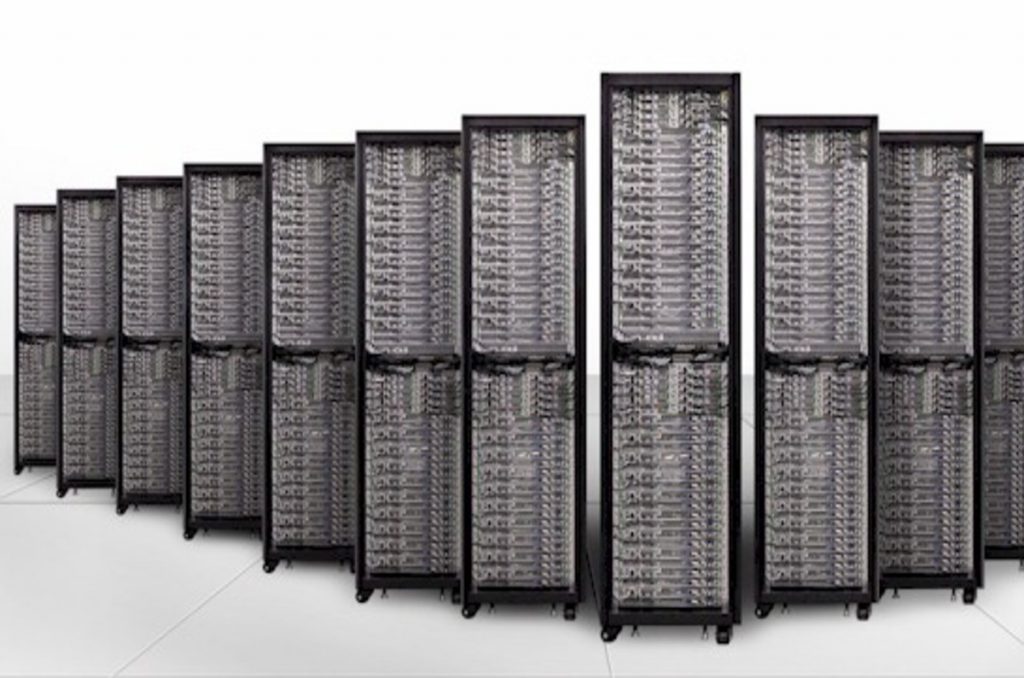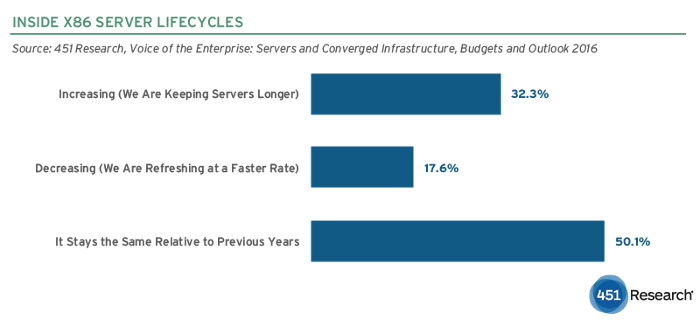
Today’s enterprise IT limelight continues to illuminate public cloud services and converged infrastructure. But as IT strategies shift to accommodate these alternative infrastructure products and services, the venerable standalone x86 server maintains its residency as the compute foundation for most workloads. What’s changing, however, is the length of time that x86 servers are hanging around.
In our recent Servers and Converged Infrastructure research, we found that nearly a third (32.3%) of organizations are keeping their servers longer today than in the past. A three-year lifecycle x86 server lifecycle is no longer the norm – 59.9% of respondents in our survey keep their servers a minimum of five years before retiring them.

We see two key factors influencing these longer lifecycles. First, chip manufacturers are nearing the physical limits of processor architectures, so no longer do we see tremendous performance increases between processor platform releases. When servers are finally retired, we’re not seeing lackluster performance as a leading driver – in fact, about twice as many organizations retire servers simply because they’re aged or failing, compared with those that say they need better performance.
Understandably, some businesses and other organizations remain locked into three-year server upgrade cycles due to strict requirements for performance and reliability, or because these contracts include more extensive and affordable support. For others, it makes sense to consider all options before automatically upgrading at the three-year (or even four-year) point. Are the servers still delivering the performance you need? Can they continue to do so for your workload needs for another year or two? Are they still in good physical condition?
Another factor we see impacting server lifetimes is cloud. Enterprises today have a wealth of IaaS and SaaS options: The more workloads they migrate to those services, the less of a load they put on their servers. As long as the performance of those servers remains adequate, enterprises can ultimately keep those servers in operation longer.
The widespread emergence of IT cloud strategies also has an impact. Some organizations are simply not as comfortable today refreshing servers at the rate or frequency they did in previous years. Why? Because business leaders continue to push IT move resources to cloud over time, which in turn forces reconsideration of traditional spend on x86 servers.
But while these various forces are extending the stay for servers, it’s unlikely these lifecycles will extend beyond their current level. First, cloud-centric concerns remain around security, latency, regulatory requirements and other issues. Second, there continue to be questions emerging around the long-term costs of public cloud versus running workloads on-premises. Third, x86 servers continue their transition into successful cloudlike architectures, including hyperconverged infrastructure.
As hybrid enterprise environments, complete with software-defined management, increase in adoption, x86 servers will obviously remain a mainstay in enterprise datacenters, but the days of three-year refreshes are quickly fading in the rearview mirror. Organizations of all sizes can benefit from extended lifecycles, which can allow them to more easily and affordably integrate next-generation, software-defined technologies, such as hyperconverged.

